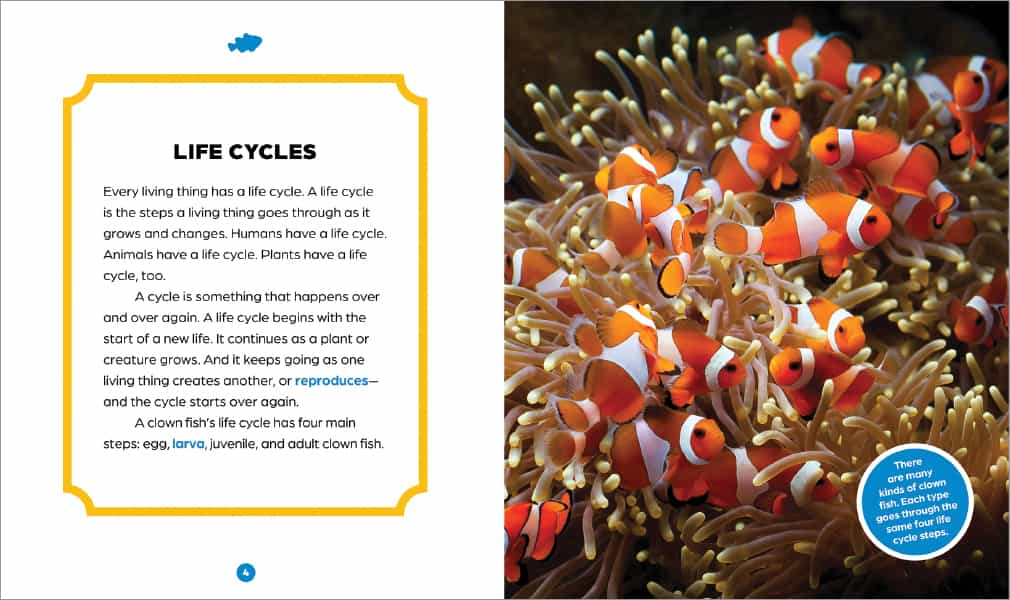The Life Cycle of a Clown Fish Blog Post
STEAM Activities: Artistic Expression, Vocab Reinforcement & Research Practice
By Lisa L. Owens
Further exploration of factual topics always helps me retain more of what I’ve taken in while reading. With that in mind, I’ve put together a few activities meant to tap into what students have already absorbed from The Life Cycle of a Clown Fish, and help them view their newly acquired knowledge through slightly different lenses.
Comic Strip Creation
Start by briefly discussing the word clown and what clown fish and circus clowns have in common. (Clown fish have brightly colored markings, humans performing as clowns might wear brightly colored clothing and hair/makeup, and so on.)
Next, have students draw a four-panel grid (as shown) on a blank sheet of 8.5" x 11" paper. Then ask them to create a comics-style scene featuring a clown fish reacting to meeting a circus clown. The comic can be wordless — with illustrations only — or it can include speech bubbles and/or captions.

Fishing for Words

Conduct a classroom vocabulary search through The Life Cycle of a Clown Fish. Each clue below describes a word found in the book. Start by giving the first clue’s page number and word description; then instruct students to find the vocabulary word in the text. If searchers need another clue, share the number of letters the word contains. Repeat the process for each clue.
- Page 4: It happens over and over again. (5 letters)
- Page 8: All the things clown fish eat. (4 letters)
- Page 9: Living creatures. (7 letters)
- Page 15: To drift. (5 letters)
- Page 26: To observe. (5 letters)
Answers: 1. cycle; 2. diet; 3. animals; 4. float; 5. watch
Matters of Fact
Have students research and report on a living thing of their choice using classroom and library books, encyclopedias, dictionaries, and online resources available to them. Ask them to choose a plant or animal not covered in any Life Cycle series books they’re studying. Reports should cover these basic elements:
- Name of living thing
- What it looks like
- Where it lives/grows
- Stages in its life cycle
- One other fun fact about it
- What sources were used
About the Book
The Life Cycle of a Clown Fish (The Child’s World, 2023) details the fish’s fascinating journey from egg to larva to juvenile, and on to the adult clown fish stage that restarts the cycle. Striking full-color photographs support the text, and carefully constructed front and back matter increase comprehension and encourage further inquiry.
Lisa L. Owens has written more than 100 books for young readers. Find her online: website, X (formerly known as Twitter), and Instagram.
